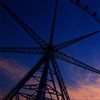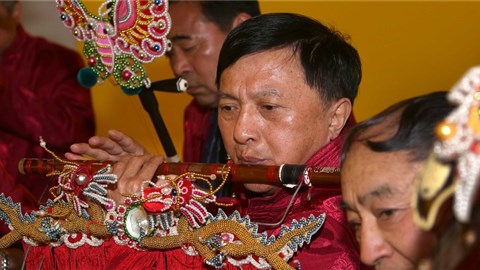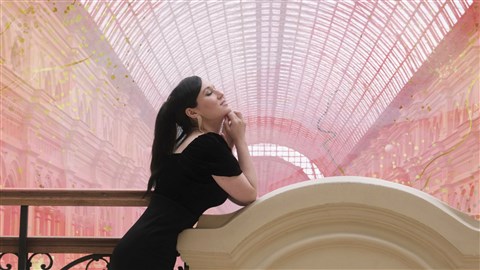Old Minhang site transitions to become innovation cluster
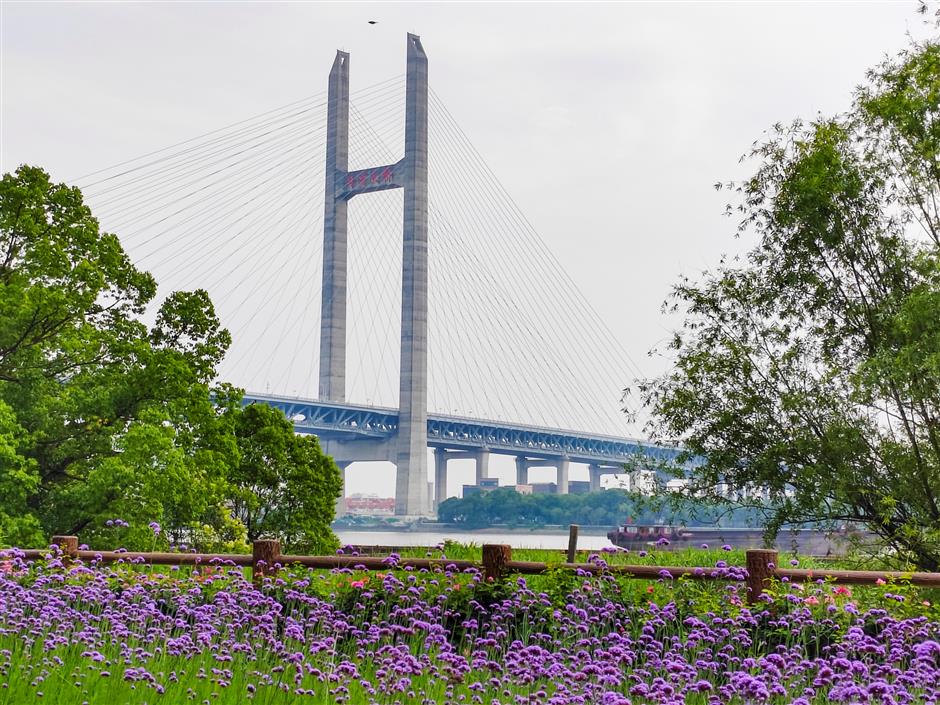
The area along the Huangpu River, now known as Old Minhang in the Jiangchuan Road Subdistrict, is the origin of the name for Minhang District.
The word "Minhang" initially referred to part of what is now the Jiangchuan Road Subdistrict, that is, the left and right of Hengjing River when it meets the Huangpu River.
In January 1960, the name was picked for a larger administrative region of Shanghai, so the local residents renamed the plot of riverfront area of Huangpu "Lao Minhang," or Old Minhang.
Historically, Old Minhang had a ferry service dating from the Yuan Dynasty (1271-1368).
Archaeological findings revealed the ferry was seated in the middle reaches of Huangpu and extended to the east for about 150 meters. Porcelain fragments suggesting daily use were unearthed along with the site of the ferry of rows of wooden stakes.
The area launched its first inland water transportation route in 1904, connecting Old Minhang with the old downtown of Shanghai. It financed its Min Hang Steamer Bureau and purchased two iron combustion motored steamers. In 1914 the inland water route was extended further to Pinghu County of neighboring Zhejiang Province.
Water transport hub
A co-founder of the steamer bureau was the contemporary industrialist of Old Minhang, Qiao Nianchun (1876-1938), who also helped introduce the electricity supply for the entire town and founded an orphanage that rescued thousands of ill-fated children. Later Qiao self-funded another steamer transportation company and a ship repair factory.
His grandson Qiao Zhen, a master film dubbing actor in China, chose the site of his language art museum near the old residence of his ancestors' family, along the riverfront of Huangpu near the Minpu No. 2 Bridge.
The museum is in the shape of a giant radio, aimed to promote and pass on the heritage of the Chinese language to the next generations, said the actor, who has dubbed classic films including "Waterloo Bridge," "The Bridges of Madison County" and "True Lies," and dubbed classic characters such as the love-struck Lieutenant Roy Cronin, the domineering Marcus Licinius Crassus and the plain and honest Tora-san in "It's Tough Being a Man."
The busy water transportation of Old Minhang also birthed its bustling trade, attracting new residents from Jiangsu, Zhejiang, Anhui, Shanxi, Fujian and Henan provinces to engage in the area's corn, oil, rice, flour, meat and tea exchanges.
The famed Xiang family came from a tea village in Anhui in East China.
Xiang Zhenfang, born in 1886 and the fifth generation of the migrant family, gave up his career as a scholar and went into business. He ran his ink and match businesses so well in Beijing, Tianjin and Shanghai that he earned the nickname the "Match King."
Xiang spent 19 years from 1916 to 1935 refurbishing his family residence in Old Minhang, now Lane 481 Xinmin Road of Jiangchuan Road Subdistrict.
The residence, a fusion of Chinese and Western styles, was listed as a Minhang district-level cultural relic in 2000, and after an overall renovation in 2014, opened as the Minhang Old Street Exhibition Hall in 2015.
The residence is famed for its chrysanthemum shows every winter and hosts international visitors such as musicians from the Shanghai International Guitar Festival.
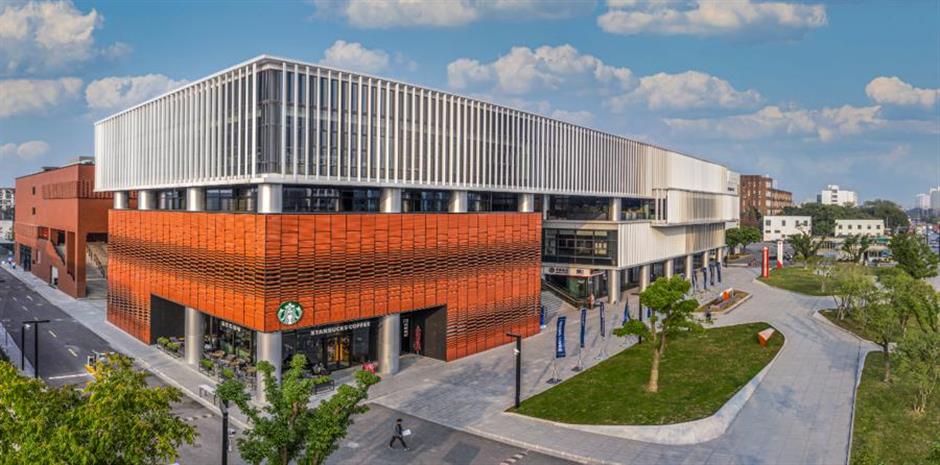
The Grand neoBay sci-tech area
NeoBay development
In the about 100 years since Shanghai opened its port in 1843 to its liberation in 1949, a unique Shanghai-style culture was cultivated in Old Minhang thanks to the bustling trading propelled by water transportation.
The current Jiangchuan Road Subdistrict was established in October 2000. This southwest town of Minhang adheres to Danshui River in the east, connects its neighboring Zhuanqiao Town with the Xinqiao-Minhang railway subline, and was circled by the Huangpu River in the south and the Xihejing River in the west.
In 2015 the Grand neoBay global innovation and entrepreneurship cluster was created in the subdistrict, infusing the area with energy for innovation and transformation.
The Vi Park at 1391 Humin Road is located in the key section of the neoBay sci-tech cluster. It started to accept corporate settlement in November 2021, and now boasts a batch of well-performing companies including Goerlight, Taier Wisdom Laser, Kado Automation, Vomma and Dayin Tech.
The prototype of the park was the birthplace of Shanghai's rubber industry – the Greater China rubber factory was founded in 1926, and the Zhengtai rubber factory began in 1927. The two factories merged to become the Shanghai Tyre Rubber Group in 1990.
To respond to industrial transformation, the group started to build its landmark sci-tech park, the Vi Park, in 2019.
The industrial park along an internal waterfront that runs north-south from Jianchuan Road to Huangpu River has been well-equipped with basketball and badminton courts, billiard halls, gyms, a yoga studio, yacht club, and Western, Japanese, Thai and Shanghai restaurants.
In autumn this year, it launched its Jiangchuan Road Subdistrict shopping festival along with the opening ceremony of its commercial street.
Culture and art resources of the region benefit its residents as well.
The Grand NeoBay Library at 158 Lanping Road opened to the public in April 2023. A new cultural landmark that boasts 380,000 books and about 800 seats for readers, its facade resembles an unfolding ancient Chinese bamboo slip and its entrance hall has a 20-meter-high bookshelf directly connected with the ceiling, imposing a strong visual impact.
By April this year, the library had hosted 663,360 visitors and had 18,572 readers, of which 78 percent were young readers.
It was awarded a city-level model library prize in 2023 and ranked top among approvals in Shanghai's town and subdistrict-level libraries.
The nine brand activities and 16 exhibitions the library held last year attracted 45,000 people.
The Jiangchuan Road Subdistrict also saw the rise of the district's mechanical and electrical industry in the 1950s. It was known for its "Big Four Factories" – the Shanghai Steam Turbine Factory, Shanghai Electrical Machinery Plant, Shanghai Heavy Machinery Plant and Shanghai Boiler Factory.
'Night of Jinping' gala
From September 22-24, the Jiangchuan Road Subdistrict hosted the ninth consecutive annual 'Night of Jinping' festival, which delighted locals with a variety of art performances, delectable food and joyful gatherings.
"The factories and plants nurtured plenty of workers' clubs," said Li Xiang, deputy chief of Jiangchuan Road Subdistrict Culture Center. "They are a heritage of the area's industrial age."
Residents of the surrounding workers' neighborhoods danced line dances and club members of the factories played saxophone and jazz music.
"We launched our first 'Night of Jinping' festival in 2014. It was initially a line dance competition, at Jinping Pedestrian Street," Li said.
The first "Night of Jinping" attracted more than 300 line dance teams. It later attracted saxophone players, jazz musicians, street artists and some cosplay actors and actresses.
"'Night of Jinping' usually took place in late September, a common typhoon season in Shanghai. So imagery recordings of it usually captured people wearing raincoats or holding umbrellas," Li said.
"We made progress each year in the past eight sessions, developing it from a line dance competition to include stage performances and fair booths to boost the night economy. And this year we encouraged industrial parks, corporates, colleges and hospitals to send their delegations for participation as a gesture of Grand neoBay coordination."
About Jiangchuan Road Subdistrict
The subdistrict is what Shanghai residents also call "Old Minhang." It used to be Shanghai's mechanical and electrical industrial highland. Construction of the Grand NeoBay, a strategic regional development plan of south Minhang, began about 10 years ago, and aims to build a world-leading innovation community on par with Silicon Valley and Zhongguancun in Beijing.

